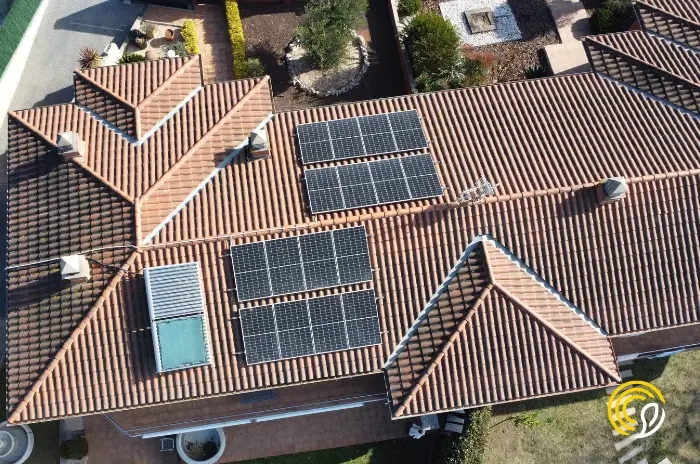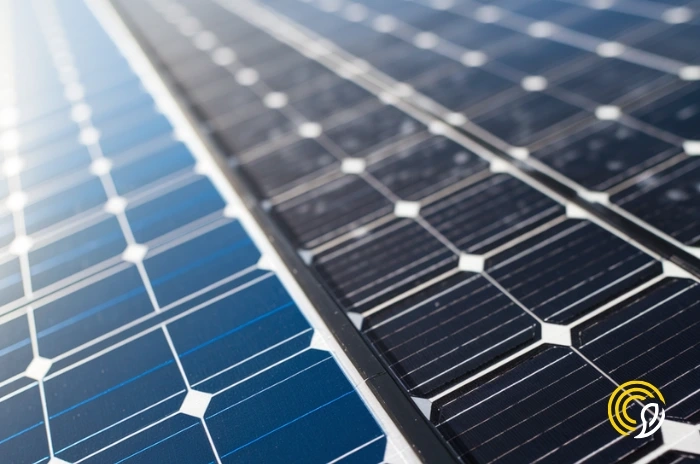
Legalising solar panels: how long does it take and how to do it?

Head of Sales Operations and Marketing at Sunhero, specialised in strategic planning and commercial excellence, passionately advancing solar energy adoption across Spain.
14/11/2024
5 min read
Table of Contents
As awareness about climate change grows, people’s daily habits are shifting—from sustainable transport choices to responsible energy use. Many people now question where their energy comes from and how it impacts the environment.
In 2023, renewable energy production in Spain grew by 15.1%, reaching 50.3% of national electricity generation, with solar energy accounting for 20.3% of the total. As more people embrace sustainability, solar panel installations are becoming increasingly popular. However, one essential step often overlooked is the legalisation of these installations.
How long does it take for the Spanish Government to approve solar panels?
The time to legalise a solar installation varies considerably. Approval times, which previously stretched over several months, have been shortened thanks to increased awareness and efforts by public administrations. However, the process can still take between 2 and 4 months, and occasionally even longer in certain parts of Spain.
It’s worth noting that the timeframe largely depends on the specific region where you live. Certain areas, like the Balearic Islands, Canary Islands, Andalusia, and Madrid, have made significant progress in reducing wait times, with approvals sometimes arriving within a month. In contrast, other regions, like Castilla y León, may still experience delays of up to six months.
How to legalise solar panel installations?
The process of legalising solar panels involves several key steps, each ensuring your installation is fully compliant so you can maximise its benefits.
Building permit
At Sunhero, we handle this step for you, so you don’t need to worry about it. Before installation, you’ll need to obtain a building permit from the local council, a requirement in all Spanish municipalities. While this process can vary by location, some councils make it straightforward, whereas others may require additional documentation.
Installation of solar panels
Once the building permit is secured, you can proceed with the installation. From this point, your panels start generating energy, and in many cases, excess power can be fed back into the grid. Installation typically takes just one or two days.
Registration with the regional authority
After installation, you’ll need to register the system with your regional authority. This is crucial for legalising your setup and allows you to sell any surplus energy produced. Although you cannot sell excess energy until you’ve received formal approval, you’ll start saving on your electricity bill from day one, thanks to the power generated by your panels.
Wait for approval
Once the registration application is submitted, the next step is to wait for approval from the regional authority. This can be the lengthiest part of the process, depending on the efficiency of the area’s administration. As mentioned, many communities are working to speed up approvals, and customers have recently reported receiving responses in less than a month.
Meter activation
Once approved by the regional authority, your energy distributor will activate the meter to register both your consumption and the excess energy you send back to the grid. This step is essential to start receiving credits or payments for the energy you export.
My solar panels have been installed. What’s next for legalisation?
Once the installation is complete, the legalisation process begins. This is governed by Spain’s Royal Decree 244/2019, which defines the framework for net-metered and self-consumption systems. The documents required vary depending on the chosen self-consumption model.
For residential solar installations, here are the main legal categories under current law:
- Self-consumption with surplus: Your solar system is connected to the main grid, feeding in any unused energy. However, there is no financial compensation for this excess energy, nor is it sold on the market; it simply flows back to the grid at no charge.
- Self-consumption without surplus: The installation is grid-connected, but a device prevents excess energy from being fed back. In some cases, this surplus may be stored in a battery.
- Self-consumption with surplus under simplified compensation: Here, excess energy fed into the grid is credited back to the system owner as a discount on the electricity bill. This must be arranged after the system is up and running.
- Self-consumption with surplus without simplified compensation: In this least common residential scenario, excess energy is sold on the energy market, requiring the system owner to register as an energy producer to sell their surplus.
Typically, the simplified compensation model applies to residential buildings with installations up to 100 kW. This means that any extra energy fed into the grid results in a monthly discount on your electricity bill, also known as a virtual battery.
Here’s an outline of the procedure:
- Notification: The regional authority informs the distributor within 10 days of receiving all documentation certifying the installation’s completion.
- Contract modification: The distributor has five additional days to update the contract with the supplier and consumer.
- Discrepancies: The consumer has a maximum of 10 days to notify the distributor if any discrepancies arise.
The entire process, from permit applications to system legalisation, generally takes between 2 and 3 months. However, depending on your region, it can extend to 5 or 6 months.
As you can see, the time needed to legalise solar panels varies since each region in Spain sets its own procedures and documentation requirements.
Typically, you’ll need the technical project report, detailing all relevant installation information. The most important factor here is the total system capacity, which must not exceed 100 kW for residential properties. Additionally, you’ll need the electrical installation certificate from the installation company. Other documents may also be required depending on the specific self-consumption model chosen.
In this video, we walk you through the legalisation and notification process, offering useful tips and explaining each step.
At Sunhero, we provide comprehensive solutions and guidance so you can enjoy savings from solar panel installation in your home. Contact us today for a no-obligation assessment, or use our solar calculator to discover your potential savings.
FAQ
How long does it take to legalise a solar panel installation in Spain?
The timeframe varies by region but generally takes between 2 and 4 months. Some regions, such as the Balearic Islands, Canary Islands, Andalusia, and Madrid, may approve within a month, while others like Castilla y León may take up to six months.
Why is legalising my solar installation necessary?
Legalisation ensures your installation complies with local regulations, allowing you to fully benefit from your system, including feeding excess energy back into the grid for credits or compensation.
What steps are involved in the legalisation process?
The main steps include obtaining a building permit, completing the installation, registering with your regional authority, waiting for approval, and activating your meter to monitor energy consumption and exports.
Can I use my solar panels before they’re fully approved?
Yes, you can start generating energy right after installation to reduce your bill, but final approval is needed before receiving any credits for excess energy fed back to the grid.
What documents are required for the legalisation of a solar installation?
Generally, you’ll need a technical project report, an electrical installation certificate from your installer, and additional documents based on your self-consumption model and regional requirements.
Start today!
Fill out our free solar calculator and get a custom quotation








































